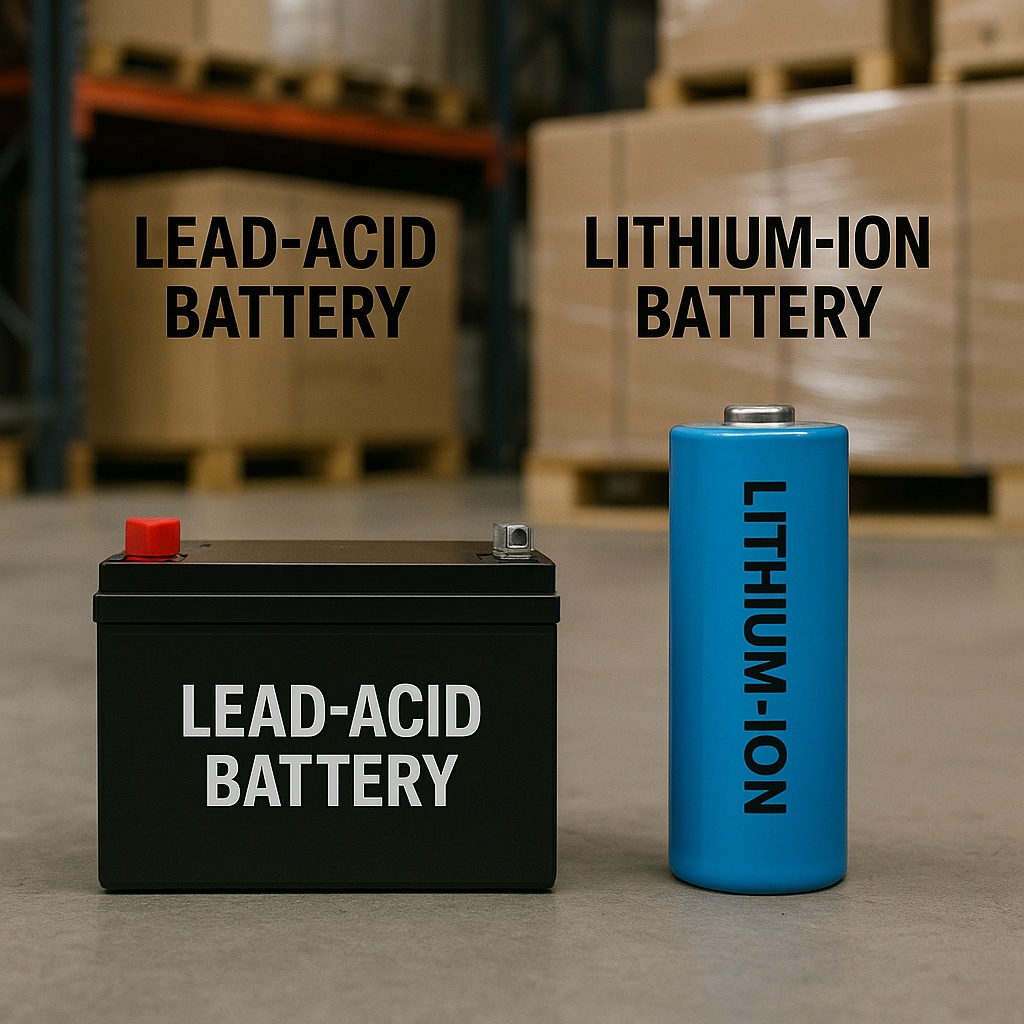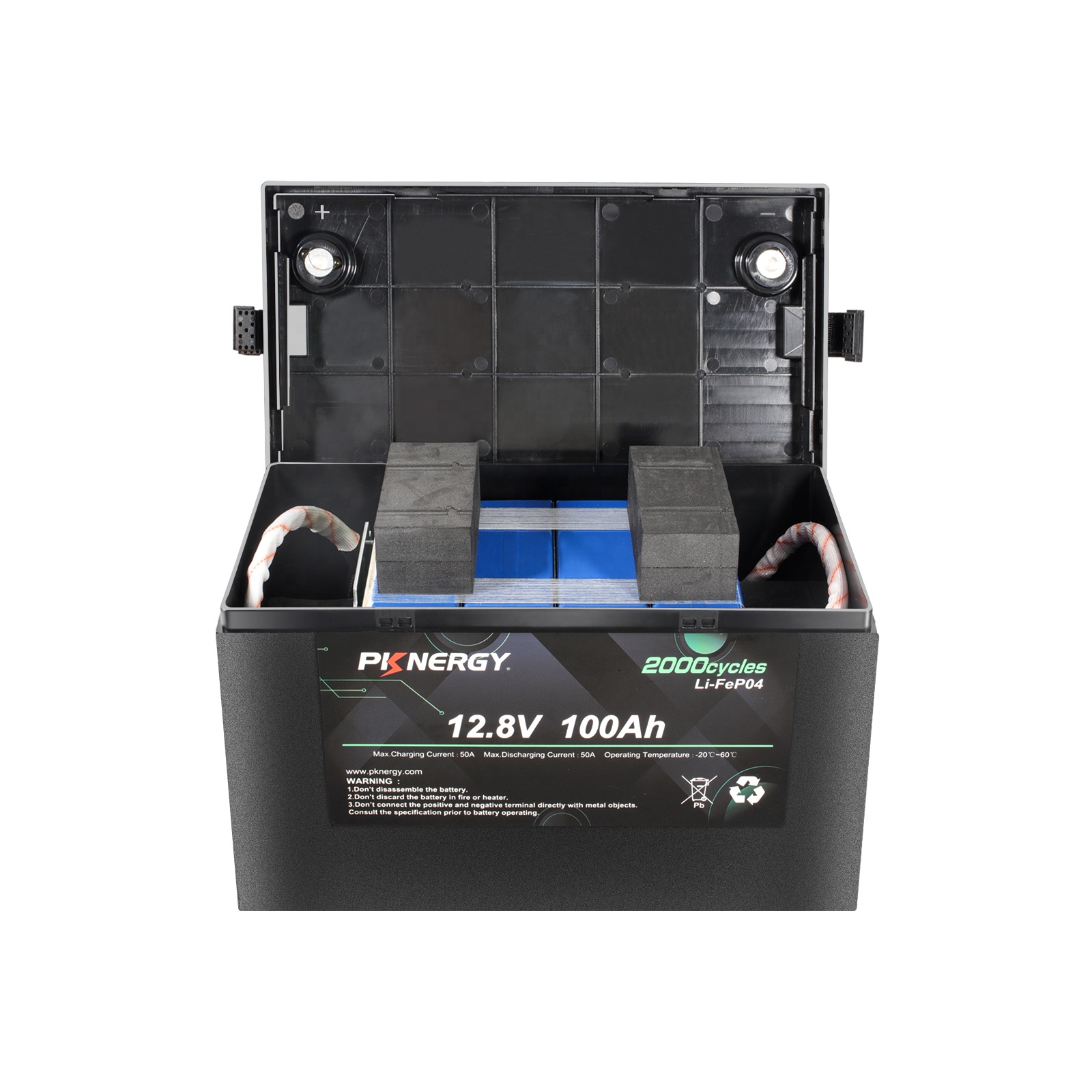Intro: Why Battery Chemistry Matters for Performance and Longevity
Choosing between lead-acid and lithium-ion batteries is a crucial decision for applications ranging from backup power and solar storage to electric vehicles and industrial equipment. While lead-acid batteries have been used for over a century, lithium-ion technology is increasingly becoming the preferred option due to its superior performance and longer service life. This article explores their differences to help you make an informed choice.
What Are the Advantages of Lithium-ion Batteries?
Lithium-ion batteries offer several key advantages over lead-acid:
-
Higher energy density (more power in less space and weight)
-
Longer cycle life (typically 2000–5000 cycles vs. 300–500 for lead-acid)
-
Lower self-discharge rate
-
No maintenance required
-
Better charge and discharge efficiency (≥95%)
-
Supports partial state of charge (PSOC) operation
These benefits make lithium-ion batteries ideal for energy storage systems, electric mobility, and high-performance applications.
What Are the Disadvantages of Lead-acid Batteries?
Despite their low upfront cost, lead-acid batteries come with limitations:
-
Short cycle life, especially under deep discharge
-
Heavy and bulky, reducing energy-to-weight ratio
-
Requires regular maintenance (e.g., water refilling in flooded types)
-
Lower efficiency (~70–85%)
-
Sulfation risk if stored discharged
-
Slow charging and limited depth of discharge (DoD)
These drawbacks lead to higher long-term costs and reduced system performance.
How Do I Tell If My Battery Is Lead Acid or Lithium?
You can identify battery type by:
| Feature | Lead-acid | Lithium-ion |
|---|---|---|
| Voltage rating | 2V, 6V, 12V common | 3.2V, 3.6V, 3.7V per cell, packs vary |
| Label | “Pb”, “AGM”, “GEL”, “VRLA” | “Li-ion”, “LiFePO₄”, “LFP” |
| Weight | Heavier for same capacity | Lighter |
| Form factor | Large blocks | Cylindrical, prismatic, or pouch |
| Terminal design | Bolt-on posts (flooded/AGM) | Wires or connectors with BMS |
Which Is Better – Lithium-ion or Lead-acid Battery?
| Feature | Lead-acid | Lithium-ion |
|---|---|---|
| Energy density | Low | High |
| Cycle life | 300–500 | 2000–5000 |
| Depth of discharge (DoD) | 50% recommended | 80–100% usable |
| Maintenance | Required (for flooded) | None |
| Charging time | 6–12 hours | 1–3 hours |
| Efficiency | 70–85% | 95%+ |
| Cost (initial) | Lower | Higher |
| Total cost of ownership | Higher (due to lifespan) | Lower over time |
Unless you have very short-term or budget-limited needs, lithium-ion is a better long-term investment.
Why Is Lithium-ion Battery the Best Choice Today?
-
Durability: Lasts 4–10 times longer
-
Scalability: Easily integrated into modular systems
-
Safety features: Built-in BMS protects against overcharge, overdischarge, and short circuit
-
Eco-friendly: Fewer replacements = less waste
-
Low total cost of ownership: Higher upfront cost offset by longer lifespan and lower maintenance
Do Lithium Batteries Charge Faster Than Lead Acid?
Yes. Lithium-ion batteries can:
-
Accept higher charge currents
-
Reach full charge in 1–3 hours vs. 6–12 hours for lead-acid
-
Have no absorption phase as in flooded lead-acid batteries
-
Enable opportunity charging (partial top-ups without damage)
This fast-charging advantage makes lithium ideal for time-sensitive operations and mobile applications.
Is Lithium Battery Safer Than Lead-acid?
Yes—especially when using LiFePO₄ (LFP) chemistry, which is extremely thermally and chemically stable.
-
No acid leakage or gas emission as in flooded lead-acid
-
Built-in protections via BMS: overcharge, thermal control, short-circuit
-
No corrosion or sulfation issues
While both types must follow safe handling practices, lithium-ion batteries offer better safety mechanisms overall.
Can We Use a Lithium-ion Battery Instead of a Lead-acid Battery?
Yes, many lithium batteries are designed as “lead-acid replacements”, with the same voltage and similar form factor. When replacing:
-
Ensure voltage compatibility (e.g., 12V, 24V, 48V systems)
-
Verify the charger is lithium-compatible
-
Choose batteries with integrated BMS and proper certifications
-
For complex systems, consult your supplier or system integrator
Is It Safe to Replace Lead-acid with Lithium-ion?
Yes—if done properly. Replacing lead-acid with lithium is safe and beneficial when:
-
A certified lithium battery with BMS is used
-
The charger is matched or reprogrammed
-
Current limits and cutoff voltages are respected
PKNERGY offers LiFePO₄ lead-acid replacement batteries designed for safe and easy integration into existing systems.
Conclusion: Lithium-ion Outperforms Lead-acid in Nearly Every Way
For users looking for longer lifespan, lower maintenance, and higher efficiency, lithium-ion batteries are a superior alternative to traditional lead-acid systems.
Whether in solar energy storage, UPS backup, or electric mobility, switching to lithium means fewer replacements, faster charging, and better overall performance—especially when using high-quality, BMS-equipped LiFePO₄ models.
Post time: May-20-2025


